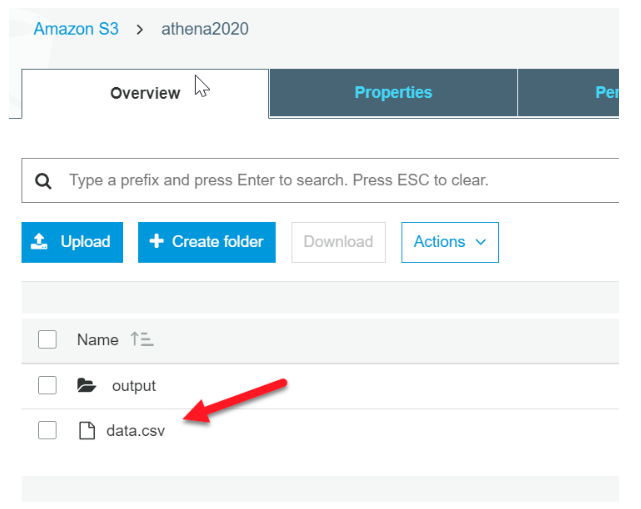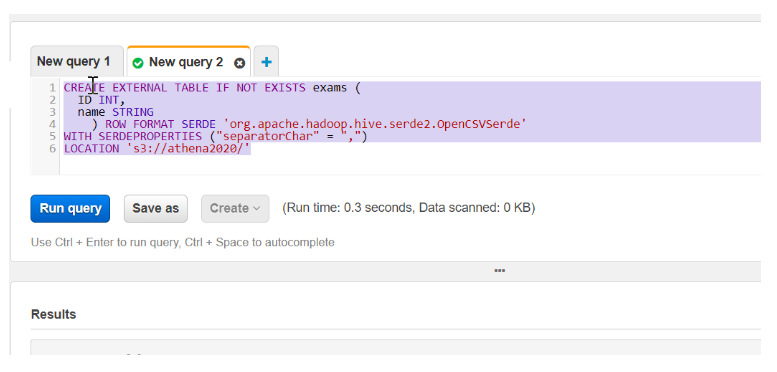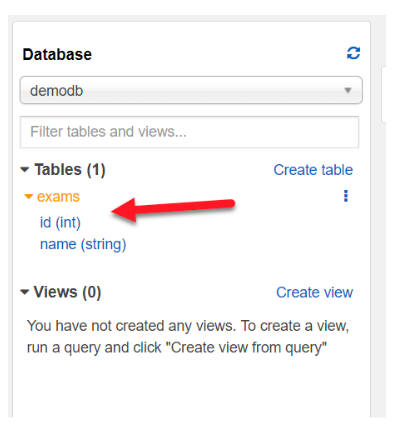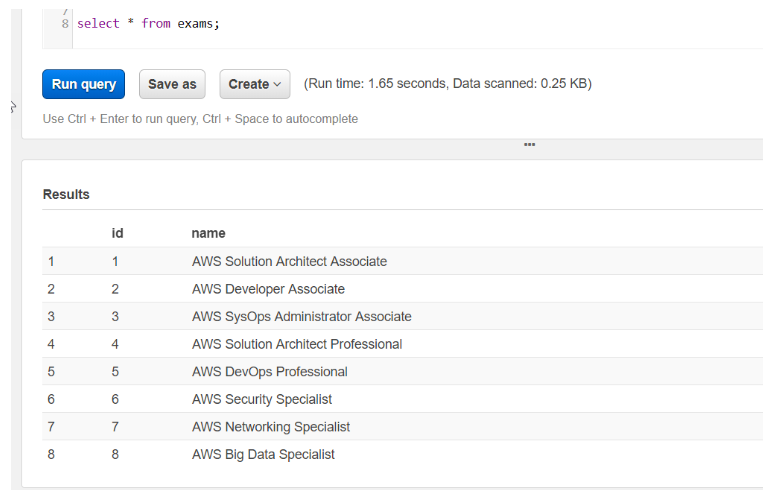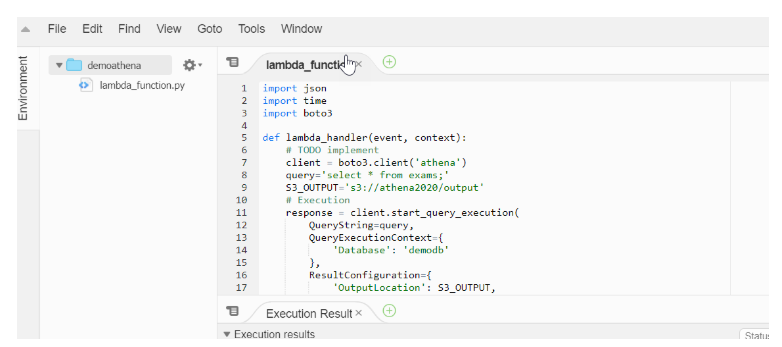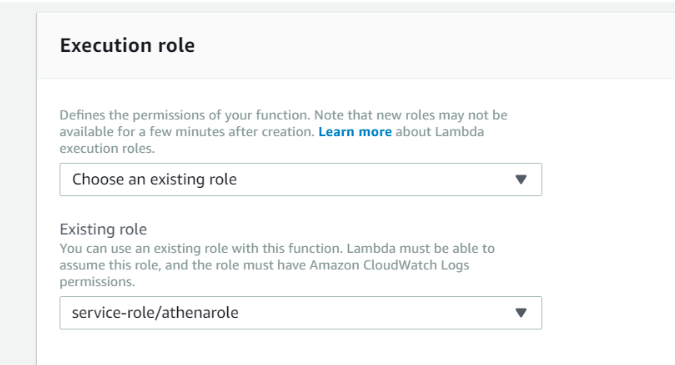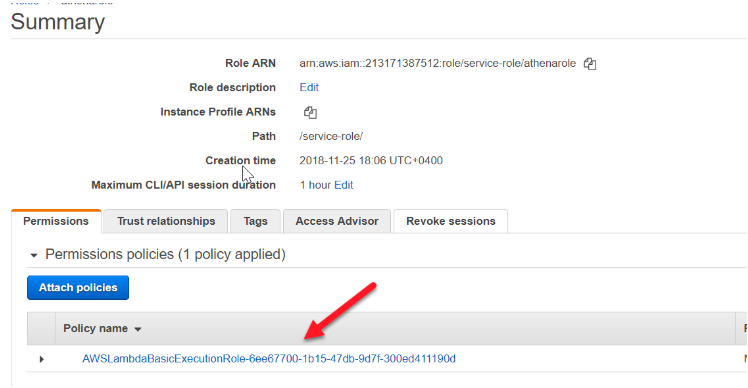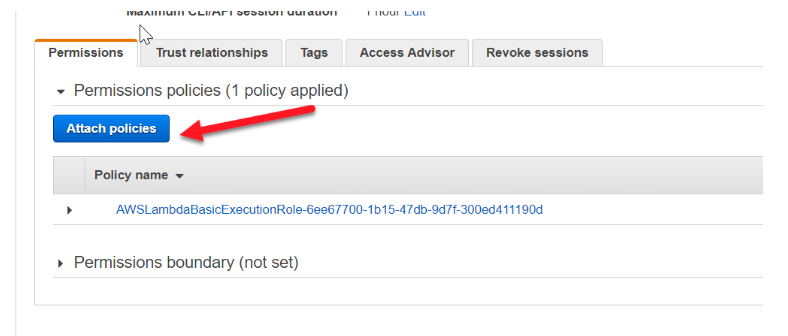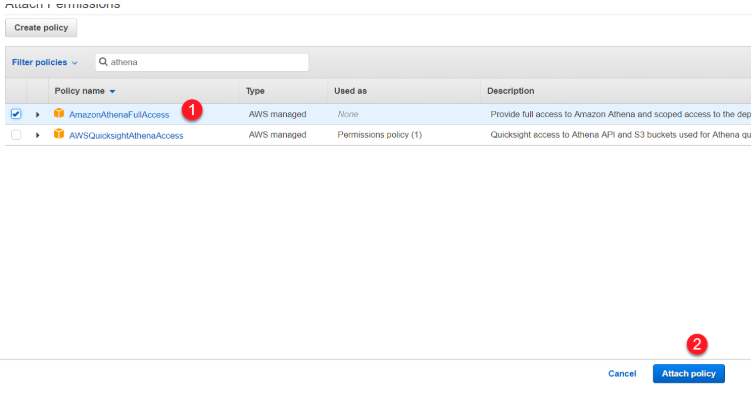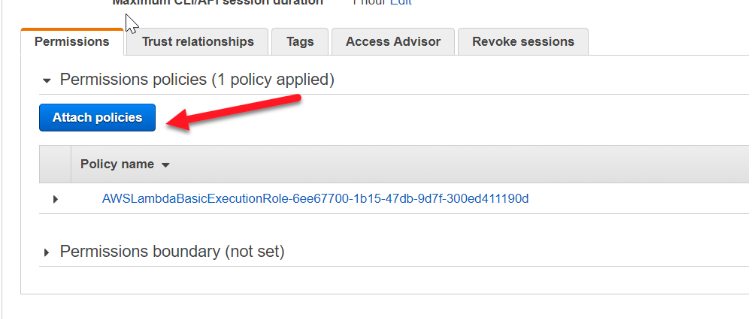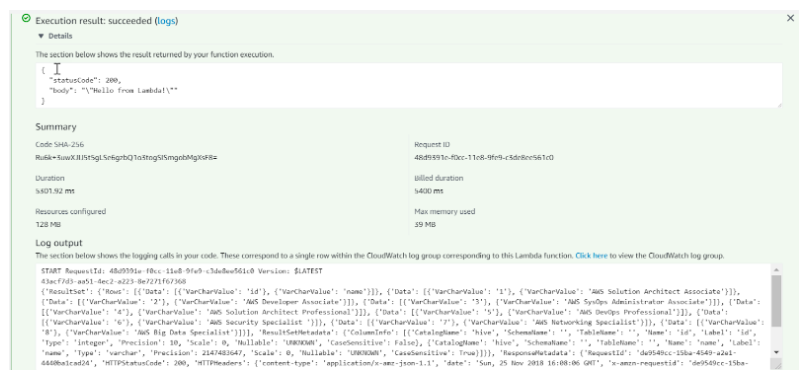The AWS Lambda service is the serverless compute service on the cloud. Now if the AWS Lambda function needs to access other resources then the IAM Role that is attached to the Lambda function needs to have the required access. This article discusses IAM Roles for AWS Lambda Function that is an important topic under the domain Identity and Access Management (IAM). This topic will help those who are preparing for the AWS Certified Solutions Architect Professional Exam or AWS Certified Security Specialty Exam.
A common type of question that comes up in the AWS certification exam is the permissions that can be assigned to an AWS Lambda function.
IAM Roles for AWS Lambda Function
Let’s understand IAM roles for AWS Lambda function through an example:
In this example, we will make AWS Lambda run an AWS Athena query against a CSV file in S3. And we will see what is required from an IAM Role perspective.
Step 1) So first, we have an S3 bucket defined as shown below
The S3 bucket has a data file called data.csv which is a simple data file which contains the name of AWS certification exams.
Step 2) Now we go onto AWS Athena. Here we have a database called demodb. We execute the following query to create a table.
Here we execute the following query:
CREATE EXTERNAL TABLE IF NOT EXISTS exams ( ID INT, name STRING ) ROW FORMAT SERDE 'org.apache.hadoop.hive.serde2.OpenCSVSerde' WITH SERDEPROPERTIES ("separatorChar" = ",") LOCATION 's3://athena2020/'
Once you run the query, you will get the table created in AWS Athena
Step 3) Now let’s run a select query in AWS Athena just to check if we are able to fetch the data.
So, you will see the result data. This is the result data that is stored in the .csv file in S3.
Step 4) Now create an AWS Lambda function. This will have python as the underlying runtime.
Following is the code snippet
import json import time import boto3 def lambda_handler(event, context): # TODO implement client = boto3.client('athena') query='select * from exams;' S3_OUTPUT='s3://athena2020/output' # Execution response = client.start_query_execution( QueryString=query, QueryExecutionContext={ 'Database': 'demodb' }, ResultConfiguration={ 'OutputLocation': S3_OUTPUT, } ) time.sleep(5) query_execution_id = response['QueryExecutionId'] print(query_execution_id) result = client.get_query_results(QueryExecutionId=query_execution_id) print(result) return { 'statusCode': 200, 'body': json.dumps('Results from Lambda!') }
The code snippet is quite self-explanatory. We are using the python boto3 SDK to work with Athena queries. We then transfer the output results to the S3 folder location ‘s3://athena2020/output’. This is important to note.
Now if you drill further down, you will see the IAM Role attached to the Lambda function
So, it’s a service role called athenarole.
If we go to the Role definition in Security credentials, you can see that the role has a basic execution policy
Step 5) Let’s run our AWS Lambda function
So, when we Test our AWS Lambda function, we are getting an Access Denied error. This is because we need to give permission to our AWS Lambda function to access the Athena service. Since the lambda function is making a call to AWS Athena, we need to add this permission to the role.
Step 6) So let’s go back to the IAM Role definition and click on Attach policies
For the purpose of this demo, let’s just add a policy for full access to AWS Athena
So in the next screen, find and choose AmazonAthenaFullAccess and choose Attach policy
Step 7) Now let’s run our Lambda function again
We are still getting the same error. Why is that?
Remember that the function also sends the output data to S3, hence we need to also ensure that the IAM role also has access to S3
Step 8) So let’s go back to the IAM Role definition and click on Attach policies
For the purpose of this demo, let’s just add a policy for full access to AWS S3
So in the next screen, find and choose AmazonS3FullAccess and choose Attach policy
Now let’s run our AWS Lambda function
You will now get a successful execution of the Lambda function
Summary
- There is a service linked role which is present for AWS Lambda functions
- These roles have permissions which are required to access other AWS services
- You can attach multiple policies to IAM Roles for AWS Lambda function
So, here we’ve covered IAM Roles with AWS Lambda Function. Hope this helps in your preparation of AWS certification exams specifically, AWS Certified Solutions Architect Professional & AWS Certified Security Specialty Exams. If you are done with your preparation, it’s the time to check your preparation level. Try Whizlabs practice tests for the AWS Certified Solutions Architect Professional Exam and AWS Certified Security Specialty Exam.
Whizlabs practice tests have been prepared by the industry experts and make you confident enough to pass the actual certification exams.
If you have any other query regarding the AWS Certified Solutions Architect Professional Exam or AWS Certified Security Specialty Exam, just put a comment below or write in Whizlabs Forum.
- Top 20 Questions To Prepare For Certified Kubernetes Administrator Exam - August 16, 2024
- 10 AWS Services to Master for the AWS Developer Associate Exam - August 14, 2024
- Exam Tips for AWS Machine Learning Specialty Certification - August 7, 2024
- Best 15+ AWS Developer Associate hands-on labs in 2024 - July 24, 2024
- Containers vs Virtual Machines: Differences You Should Know - June 24, 2024
- Databricks Launched World’s Most Capable Large Language Model (LLM) - April 26, 2024
- What are the storage options available in Microsoft Azure? - March 14, 2024
- User’s Guide to Getting Started with Google Kubernetes Engine - March 1, 2024



